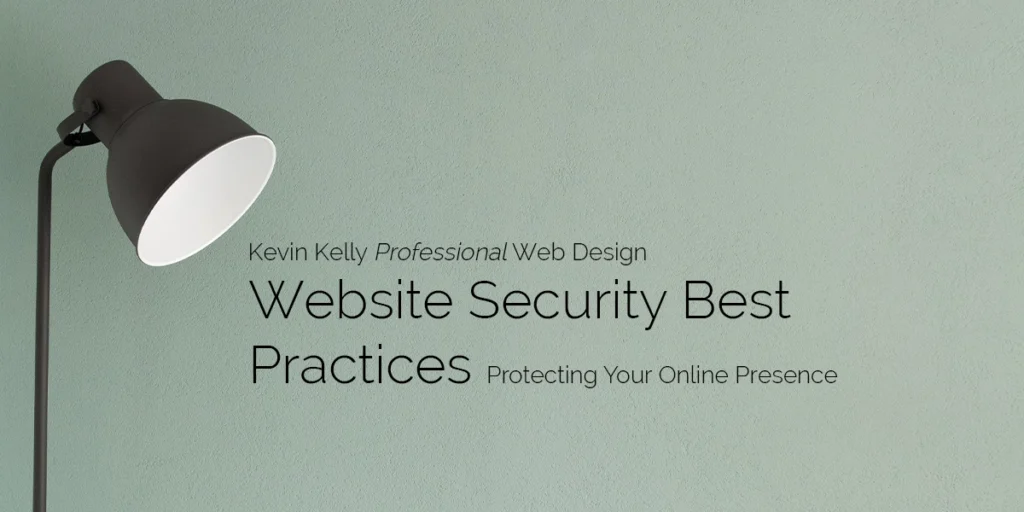
Introduction
Website Security is fundamental to staying safe on the web. Without top-level protection, your identity is up for grabs.
Websites are fundamental to our digital ecosystem, offering individuals, businesses, and organisations a platform to communicate and conduct transactions.
In this interconnected world, web security has become a critical concern, as websites are targets of a wide range of threats, including data breaches, hacking attempts, and malware, to name a few.
The Importance of Website Security
Protecting Sensitive Data
One of the most significant reasons for website security is protecting sensitive data. Websites often collect and store user information, including personal details, financial data, and login credentials.
This data is vulnerable to theft without proper security measures, resulting in identity theft, fraud, and other malicious activities. A data breach can have devastating consequences for both users and the website owner.
Preserving User Trust and Reputation
Users expect their data to remain safe and secure, and a breach can erode trust in the affected website or organisation. Loss of confidence will lead to decreased user engagement, customer attrition, and a damaged reputation that may take years to rebuild. Consequently, website security is fundamental to maintaining a positive online image.
Legal and Regulatory Compliance
Many regions and industries have stringent data protection laws and regulations. Failing to secure user data can result in legal consequences, fines, and potential legal action. Ensuring website security is a best practice and often a legal requirement.
Financial Implications
Website breaches can have significant financial repercussions. These include the cost of investigating the breach, mitigating the damage, notifying affected users, potential fines, and compensation to victims.
Mitigating Cyberattacks
Cyberattacks are a constant threat in the digital world. Hackers and malicious actors employ a variety of tactics to compromise websites, including SQL injection, cross-site scripting (XSS), and distributed denial-of-service (DDoS) attacks.
Adequate security measures deter and defend against these attacks, helping maintain website availability and functionality.
Safeguarding Intellectual Property
Websites often contain valuable intellectual property, including proprietary software, content, and trade secrets. A breach can lead to the theft or exposure of these assets, compromising an organisation’s competitive advantage and innovation.
User Experience
A secure website enhances the user experience by providing confidence in the safety of their interactions. Users are more likely to engage with a website when they trust their data is protected, increasing user satisfaction and loyalty.
Website Security Best Practices
Adopting a multi-layered security approach is crucial to protect your website from these threats. Here are some best practices.
(Note that the following applies to every website out there; however, for the most part, some aspects may be overkill to a small local business site.)
Regular Software Updates
Keep your web server software, content management system, and plugins up to date to patch known vulnerabilities.
SSL/TLS Encryption
Enable secure sockets layer (SSL) or transport layer security (TLS) to encrypt data in transit, protecting sensitive information.

The padlock proves that a Secure Sockets Layer (SSL) is encrypting all data from Kevin Kelly Web Design.
Backup and Disaster Recovery
Backup and disaster recovery (BDR) is a comprehensive strategy and set of practices to protect an organisation’s data and ensure business continuity during data loss or a catastrophic event. Fortunately, when customers host their site with me, BDR is all-inclusive.
File Upload Security
File upload security is critical to web application security, as it addresses the potential risks associated with allowing users to upload files to a website or web application.
Malicious users can exploit this feature without proper safeguards to compromise a website’s integrity, steal sensitive data, or carry out other harmful actions.
When my customers employ my services, File security is guaranteed.
User Education
Educate your team (and customers) about safe web practices and promote user security awareness.
Strong Authentication
Implement robust password policies and consider multi-factor authentication for added security.
Web Application Firewall (WAF)
A Web Application Firewall (WAF) is a security solution that protects web applications and websites from various online threats and attacks. It acts as an additional layer of security, placed between a web application and the client (e.g., a user’s browser), to filter and monitor incoming traffic.
WAFs help mitigate various security risks and vulnerabilities, such as SQL injection, cross-site scripting (XSS), cross-site request forgery (CSRF), and other web-based attacks.
Security Audits and Penetration Testing
Regularly assess your website’s security through audits and penetration testing to identify vulnerabilities.
Access Control
Restrict access to sensitive areas of your website, only providing permissions to authorised personnel.
Content Security Policy (CSP)
Implement CSP headers to control the sources from which content loads, reducing the risk of XSS attacks.
Conclusion
Website security is not merely an option but an imperative aspect of the digital landscape.
The importance of website security is evident in its role in protecting sensitive data, preserving trust and reputation, adhering to legal requirements, mitigating financial losses, defending against cyberattacks, safeguarding intellectual property, ensuring business continuity, and enhancing the user experience.
As the digital ecosystem evolves, website security will remain foundational in protecting online assets and fostering a secure and trusted online environment.
Can I Help?
Absolutely! If you start from scratch, implementing each best practice is a breeze on a brand-new website. I build every site using the WordPress CMS Platform, which is feature-rich, including security.
If you have an existing site with potential security concerns, I have the expertise to identify them and suggest a plan of attack (no pun intended).
Contact me today and let’s get started.